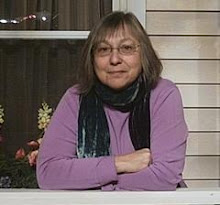 Which Williamsburg, Which spelling?
Which Williamsburg, Which spelling?There are three distinct communities that comprise the area known as Williamsburg. The northern section is where the artists have created a vibrant community with galleries, late night music venues and trendy restaurants . South Williamsburg (south of Broadway) is the Hasidic section, not just any Hasidim but Sadmars, a highly insulated community with their distinctive dress and communal life. East  Williamsburg is a Hispanic community with deep roots in Puerto Rican culture.
Williamsburg is a Hispanic community with deep roots in Puerto Rican culture. 
 Williamsburg is a Hispanic community with deep roots in Puerto Rican culture.
Williamsburg is a Hispanic community with deep roots in Puerto Rican culture. 
With or without the H?
There are two spellings of Williamsburg, with and without the H. The current spelling without the H, came about after the after the consolidation of Williamsburgh into Brooklyn, when the H was dropped and the fabric of the nei ghborhood changed along with the spelling. The original spelling can be seen on such institutions such as the Williamsburgh Saving Bank. An interesting note is that the area was named for the surveyor Colonel Jonathan Williams, Williams + burgh, not for Richard Woodhull, the owner of the land. All he did was survey it. When he actually designed the northern battery on Governor's Island, the battery was also given his name, Castle Williams.
ghborhood changed along with the spelling. The original spelling can be seen on such institutions such as the Williamsburgh Saving Bank. An interesting note is that the area was named for the surveyor Colonel Jonathan Williams, Williams + burgh, not for Richard Woodhull, the owner of the land. All he did was survey it. When he actually designed the northern battery on Governor's Island, the battery was also given his name, Castle Williams.
 ghborhood changed along with the spelling. The original spelling can be seen on such institutions such as the Williamsburgh Saving Bank. An interesting note is that the area was named for the surveyor Colonel Jonathan Williams, Williams + burgh, not for Richard Woodhull, the owner of the land. All he did was survey it. When he actually designed the northern battery on Governor's Island, the battery was also given his name, Castle Williams.
ghborhood changed along with the spelling. The original spelling can be seen on such institutions such as the Williamsburgh Saving Bank. An interesting note is that the area was named for the surveyor Colonel Jonathan Williams, Williams + burgh, not for Richard Woodhull, the owner of the land. All he did was survey it. When he actually designed the northern battery on Governor's Island, the battery was also given his name, Castle Williams. Williamsburgh attracts Wealth
WilliamsburgH came into existence in the 1840s, quite late in Brooklyn historical terms, and within a 15 year period WillliamsbugH went from a town to a city and finally was incorporated into Brooklyn as the Eastern District. But more amazing than the rapid status change was the rapid growth and accumulation of wealth in the area. Think Standard Oil, Corning Glass, Pfizer, Domino sugar, Esquire Shoe Polish, Dutch Mustard : all originated in WilliamsburgH.
Names such as Vanderbilt, Jim Fisk, Charles Pratt, Charles Pfizer walked these streets, did their banking here and set up industries. The institution of the ferry to and from Manhattan and street names such as Grand do not adequately reflect the wealth that was in Williamsburgh. According to Wikipedia, ten percent of the wealth of the US was in WilliamsburgH. It became a major banking hub, and the number of banks and elegant buildings are testimony to the magnitude of the money. Three of these buildings survive today. The Kings County Savings Bank, now the Williamsburg Art & Historic Center (photo at right), looks more like a mansion than a bank.
The Williamsburg Bridge (no H)
This bridge lacks the panache of the Brooklyn Bridge, and was the second bridge to span the East River. The entrance to the bridge was in the heart of the Lower East Side of Manhattan, and the bridge became a convenient byway giving immigrants access to Brooklyn both to live and work.






Greetings! Please see the recent Williamsburg incidents; please disseminate this vital public service to preclude more tragedies. Many thanks.
ReplyDeleteBest,
Blair
Just so you know, I confer with Con Edison's Stray Voltage and Public Affairs Units and contribute to Wet Nose Guide and New York Dog Chat.
HOW TO SLAY AN INVISIBLE DANGER.
Blair Sorrel, Founder
http://www.StreetZaps.com
Contact voltage is a chronic hidden hazard that can readily victimize an unsuspecting dog, walker, or both. No dog lover could possibly observe a more horrifying scene than witnessing his beloved pet instantaneously maimed or tragically electrocuted. When you exercise your pooch, please exercise greater prudence. Common outdoor electrical and metal fixtures may shock or even kill your vulnerable dog. And depending upon the current, the walker will be bitten and like poor Aric Roman, suffer permanently. But you can, indeed, self-protect.
Just start to adopt this simple strategy — EYEBALL THE BLOCK, AND AVOID A SHOCK. Take a few seconds and make your trajectory toward generally safer, free standing, non-conductive surfaces, ie., plastic, wood, cardboard. Intuit your dog’s cues and if it’s resistant, change directions. Work site perimeters may be live so try to elude them. If necessary, switch sides of the street or your hands when leading to skirt hazards. If you traverse the same route, you may memorize locations of potential dangers. Carry your pooch when in doubt. Consider indoor restroom products like PottyPark when external conditions are chancy or RopeNGo’s hardware-free leash and harness. And don’t rely on dog booties as a palliative as they will actually put your pet at even greater risk since the dog can’t tell you they’re leaking! To learn to more, please see StreetZaps. A safer walk is yours year round if you are willing to open to your eyes and mind to it.